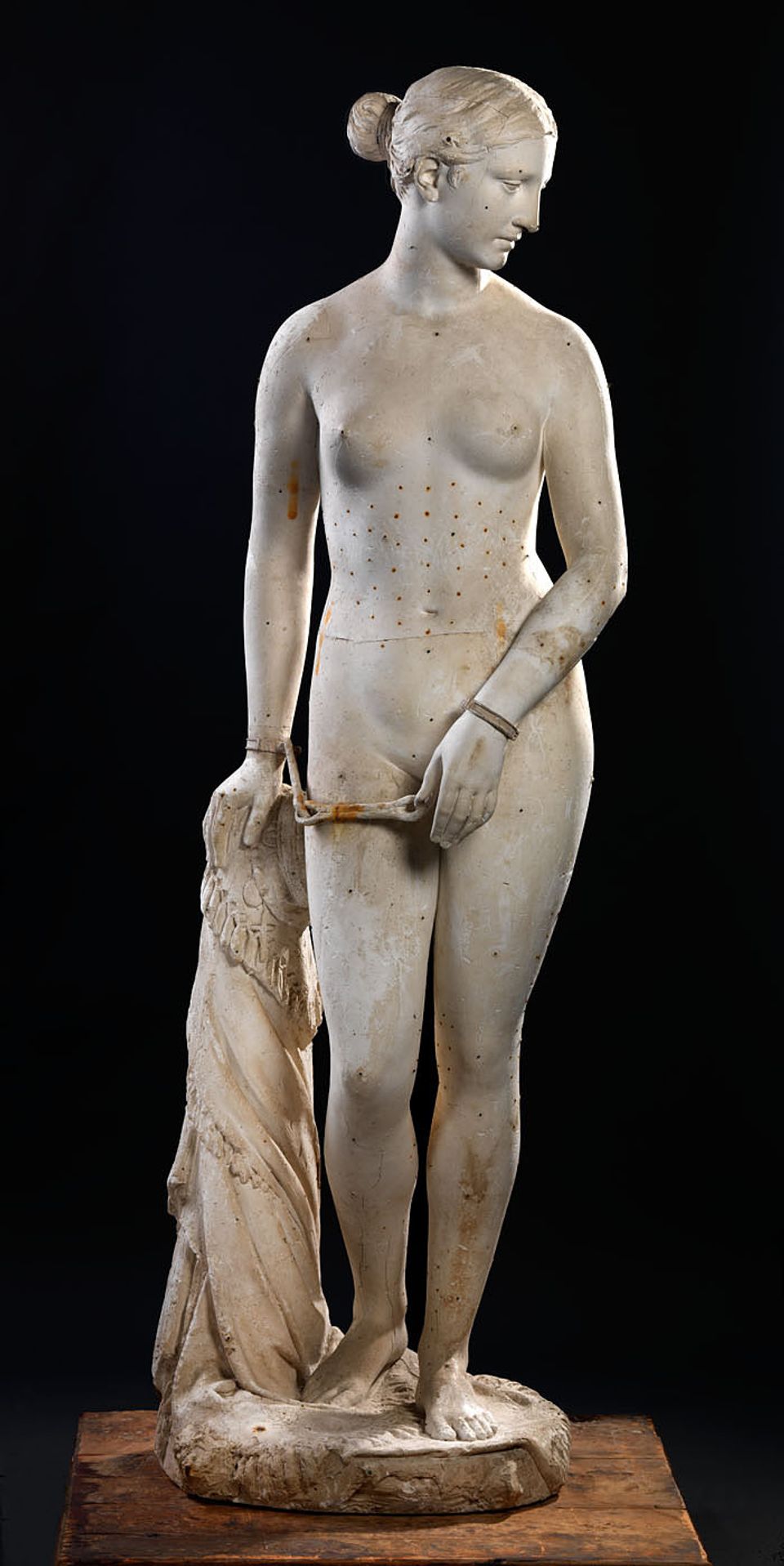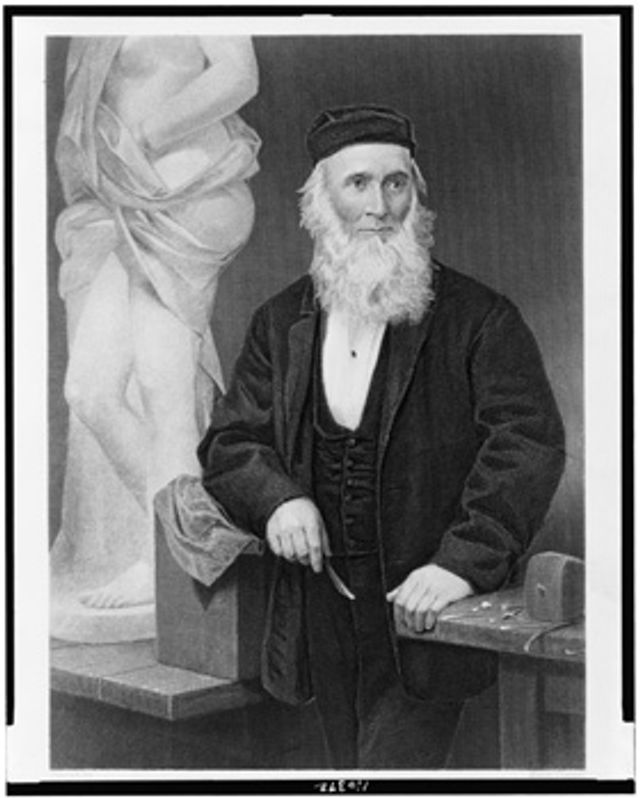Measured Perfection: Hiram Powers’ Greek Slave

This one-gallery exhibition reveals the inner workings of the studio of Hiram Powers (1805 – 1873), who was among the most innovative sculptors of the nineteenth century, eagerly adapting long-standing sculpture traditions to new technologies of his age.
The display draws from an extensive collection acquired by the Smithsonian American Art Museum directly from Powers’ studio in Florence, Italy, in 1968. Finished and unfinished artworks and a selection of tools reveal Powers’ creative process and ingenious experiments, including the highly controversial practice of body casting. A key object in the exhibition is the life-size plaster of Powers’ Greek Slave, the most highly acclaimed sculpture of the nineteenth century, so famous that Powers applied for a U.S. patent on the composition.
Description
This example of the Greek Slave is studded with the metal points in preparation for replication by the pointing machine—a clever, patented mechanical device used to translate plaster models into multiple marble replicas. A daguerreotype of the Greek Slave and Parian porcelain reduction illustrate the reproduction of this popular sculpture in other formats during Powers’ lifetime. X-radiographs of this unique plaster, recently made at the museum’s Lunder Conservation Center, encourage audiences to consider ways in which scholarship relies on current technology to interpret the past. Interactive didactic displays and activities—including a special activity for children—invite viewers to appreciate Powers’ innovative contributions to nineteenth-century sculpture, while videos of 3-D scanning and a pointing machine in use demonstrate how sculpture tools and techniques have changed since Powers’ time.
The exhibition is organized by Karen Lemmey, sculpture curator.
Visiting Information
Videos
Credit
Measured Perfection: Hiram Powers’ Greek Slave is organized by the Smithsonian American Art Museum in collaboration with the United States Patent and Trademark Office.
Explore the 3D Model
Artists
Born and grew up in Vermont, later lived in Ohio before moving to Florence, Italy, in 1837.














